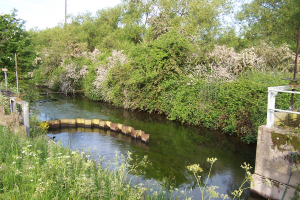Observations

May – June 2017
A new site record of 62 Mute Swans was recorded in May. A Barnacle Goose was an unusual if dodgy record of a local feral bird. A pair of Garganeys arrived in early June, probably failed breeders from elsewhere, and up to four were recorded during the rest of the month.
A pair of Black-necked Grebes which arrived in May got our pulses racing, but us older members barely had time to take our heart medication before they decided that the conditions were not to their liking and departed overnight.
Singles of Osprey and Marsh Harrier added to our six other more regular raptors. Tawny Owls nested in the nestbox by the Kingfisher hide.
A nice variety of visiting waders included a presumably local pair of Oystercatchers, up to three Ringed Plovers, a Dunlin, a Whimbrel, up to two Greenshanks, a Wood Sandpiper, and our usual Common and Green Sandpipers, but the most exciting was a party of seven Black-tailed Godwits which landed on No 1 Lagoon, one of which was colour ringed and proved to have been ringed in Iceland (see here for a full report). Add in the breeding attempts by Lapwing, Redshank and Little Ringed Plover, and we have a creditable 18 wader species in this period.
Our first Cuckoo on 1st May was probably our latest recorded arrival but this was followed by relatively good numbers with up to three males and a female being regularly heard or seen. A Raven put in an appearance in May.
Up to five Goldcrests were recorded, and a single Treecreeper was our only ‘woodland wanderer’ so far this summer. April’s Nightingale continued singing throughout May and was later joined by a second bird. There was also a sighting of what was believed to be a female bird on one day. We hold our breaths for proof of breeding…
A Whinchat was a nice find, especially with a Stonechat present on the same May day; and we had single Yellow Wagtails on two dates. Finally, Linnets are making a bit of a comeback, being recorded throughout the period, and a very young juvenile was captured in June – our first breeding record for this much declined species since 2009.
Get a detailed report, with up to date news of ringing and recoveries, promptly from our Bulletin, free to all Friends – go to Support Us for details.
